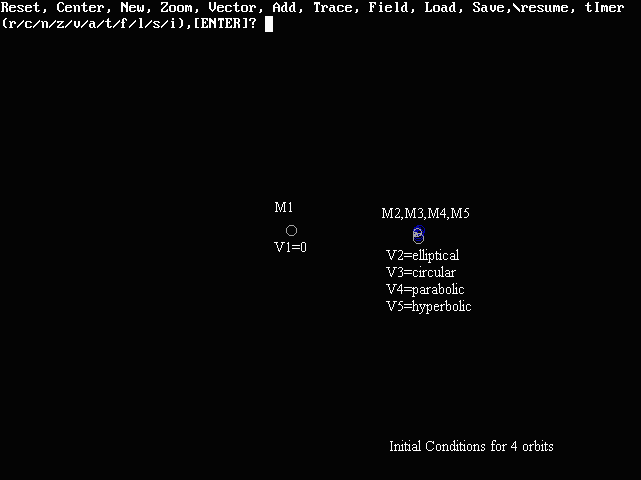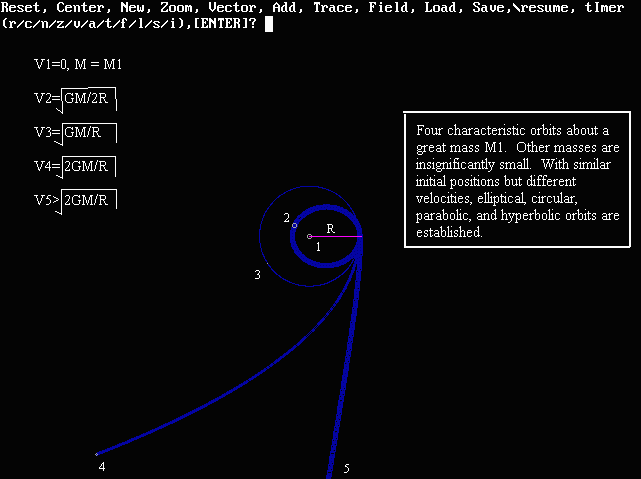Orbits with Gravity Lab
Characteristic Orbits
For systems where one mass is significantly greater than
the others, the motion of objects around the central mass can be simplified
to motion around a fixed point. The type of motion can be subdivided
into two main categories - orbits that are bounded and orbits that are
unbounded. For bounded orbits, two categories exist - circular and
elliptical orbits. In both cases the orbiting body returns to something
very close to the initial conditions. The circular orbit exists for
initial velocity vector pointing tangential to the line connecting the
orbited and orbiting body with magnitude that balances 'centrifugal' acceleration
(or acceleration of circular motion) with the acceleration caused by the
mass of the orbited body. For these conditions to be met the initial
velocity magnitude of the orbiting body will be v=(GM/R)1/2,
where M is the orbited body, R is the distance between them, and G is the
fundamental constant of gravity.
For the orbit to be elliptical, the same initial conditions
apply accept for the initial velocity magnitude - this value must be less
than or greater than that of a circular orbit, up to the limiting value
of the velocity of a parabolic orbit, where the kinetic energy of motion
is equal to the gravitational energy of gravity, to wit:
KE=PE ==> mv2/2 = GMm/R ==> v(parabolic)=(2GM/R)1/2.
Velocities greater than that of parabolic orbits are
hyperbolic,
and never return to their initial conditions. Ostensibly, a parabolic
orbit will return to its initial conditions when time = infinity.
An example of initial conditions for the characteristic
orbits:

In this example, M1=3e13 kg, v1=0;
m2-m5=100 kg (nominal). v2=21/2, v3=2, v4=2.828, v5=5.29
m/s. After one-half period of the elliptical orbit, it evolves to
look like:

Eventually, four characteristic orbits evolve:
.

Contents:
How Gravity Lab works.
Characteristic orbits.
The Reduced Mass Theorum.
Characteristic orbits around the
Center of Mass.
Chaotic motion and the limits of
closed orbits.
Bibliography.
Credits.


